Handmade DIY Tiles: An Unique Addition to Your Decor
If you’re looking to add a splash of personality to your living space, look no further than handmade DIY tiles. These little pieces of art can transform any room into a vibrant, personalized haven. Imagine walking into your kitchen or bathroom, and instead of the same old boring tiles, you see stunning, colorful designs that reflect your unique style. Sounds amazing, right? Well, it’s not just a dream; it’s entirely possible with a bit of creativity and effort!
Handmade tiles are not just about aesthetics; they come with a plethora of benefits that can elevate your home decor. For starters, they are often crafted from high-quality materials, making them incredibly durable. Unlike mass-produced tiles, which can chip and fade over time, these handmade beauties are designed to last. Plus, they offer a personal touch that store-bought tiles simply can’t match. Each tile tells a story, showcasing the artisan's skill and creativity, which can add a rich layer of meaning to your decor.
Another fantastic aspect of DIY tiles is the freedom they offer. You can experiment with different materials, colors, and designs to create something that truly resonates with your style. Whether you prefer a rustic look with earthy tones or a modern vibe with sleek finishes, the possibilities are endless. Plus, engaging in the DIY process can be incredibly fulfilling, allowing you to express your creativity while crafting something unique for your home.
So, are you ready to dive into the world of handmade DIY tiles? Let’s explore the incredible benefits and creative potential of these unique decor elements!
When it comes to home decor, the benefits of handmade tiles are numerous and compelling. First and foremost, they bring an unmatched aesthetic appeal to your space. With their unique designs and vibrant colors, handmade tiles can serve as a focal point in any room. Imagine a beautiful mosaic backsplash in your kitchen or an intricate tile pattern in your bathroom. These tiles can transform ordinary spaces into extraordinary ones.
Moreover, handmade tiles are incredibly durable. They are often made from high-quality materials that can withstand the test of time. Unlike mass-produced tiles that may crack or fade, handmade tiles maintain their beauty and functionality for years. This durability makes them a smart investment for homeowners who want to enhance their decor without the worry of frequent replacements.
Another significant advantage is the personal touch that handmade tiles provide. Each piece is unique, often reflecting the artisan's creativity and skill. This individuality adds character to your home, making it feel more inviting and personal. You can even incorporate tiles that tell a story—perhaps a design inspired by your travels or a color scheme that holds special meaning for you.
Now that you’re excited about the benefits of handmade tiles, let’s talk about the materials you can use to create your own! The world of DIY tile making is vast, offering a variety of options that cater to different styles and preferences. Here’s a quick overview:
| Material | Characteristics | Best For |
|---|---|---|
| Clay | Versatile, easy to mold | Rustic or traditional designs |
| Ceramics | Glazed, durable, vibrant colors | Modern and contemporary styles |
| Glass | Reflective, elegant | Modern and sleek designs |
| Natural Stone | Unique patterns, earthy tones | Rustic and organic aesthetics |
Each of these materials offers distinct characteristics that can greatly influence the final look of your tiles. Whether you’re drawn to the rustic charm of clay or the sleek elegance of glass, there’s something for everyone in the world of DIY tiles.
- What are the best materials for DIY tiles? The best materials include clay, ceramics, glass, and natural stone, each offering unique characteristics.
- How durable are handmade tiles? Handmade tiles are often more durable than mass-produced tiles, especially when made from high-quality materials.
- Can I customize the designs of my tiles? Absolutely! One of the best parts of DIY tiles is the ability to create custom designs that fit your style.
- What tools do I need for making tiles? Basic tools like molds, glazing supplies, and a kiln for firing clay are essential for tile making.

Benefits of Handmade Tiles
When it comes to enhancing your home decor, handmade tiles are truly a game-changer. Imagine walking into a room and being greeted by a stunning mosaic of colors and textures that immediately catches your eye. These tiles are not just functional; they are a form of art that can elevate the ambiance of any space. One of the most significant benefits of using handmade tiles is their aesthetic appeal. Each tile is unique, often reflecting the personality and creativity of the maker, which means your decor can be as distinctive as you are.
Another remarkable advantage is their durability. Unlike mass-produced tiles, handmade options are crafted with care and attention to detail, often resulting in a stronger and more resilient product. They can withstand the test of time, making them a wise investment for your home. Plus, they can handle the hustle and bustle of daily life, from the kitchen to the bathroom, without losing their charm.
But it doesn't stop there! Handmade tiles also bring a personal touch to your decor. Whether you're looking to create a cozy, rustic vibe or a sleek, modern aesthetic, these tiles can be tailored to fit your vision. You can choose your colors, patterns, and materials, allowing for a level of customization that is hard to achieve with standard tiles. This means that every time you walk into a room adorned with your handmade creations, you’re reminded of the effort and creativity that went into them.
Furthermore, handmade tiles are often made from eco-friendly materials, making them a sustainable choice for the environmentally conscious homeowner. By opting for tiles that are crafted by hand, you support artisanal craftsmanship and reduce your carbon footprint as they typically involve less energy-intensive manufacturing processes.
In summary, the benefits of handmade tiles are numerous and compelling:
- Aesthetic Appeal: Unique designs that stand out.
- Durability: Long-lasting and resilient.
- Personal Touch: Customizable to fit your style.
- Eco-Friendly: Sustainable materials and processes.
So, if you’re considering a home makeover or simply want to add a touch of flair to your existing decor, handmade tiles might just be the perfect solution. They offer a blend of beauty, durability, and personalization that can transform your living space into a true reflection of who you are.
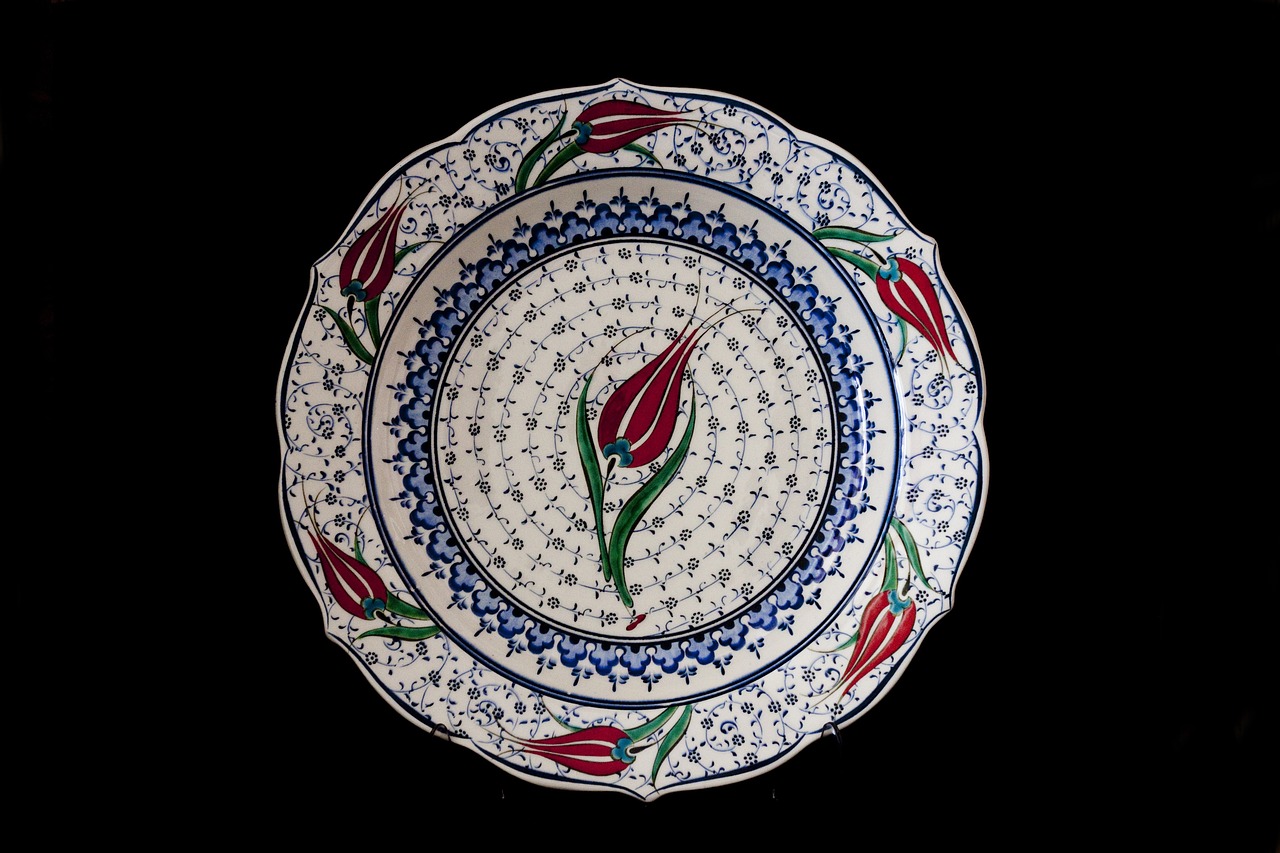
Materials for DIY Tile Making
When embarking on the exciting journey of DIY tile making, the choice of materials plays a pivotal role in determining the beauty and functionality of your creations. Each material offers its own unique charm and characteristics, allowing you to express your creativity in countless ways. From the earthy tones of clay to the shimmering elegance of glass, the options are as diverse as your imagination. Let's dive into some of the most popular materials you can use for crafting your handmade tiles.
First up, we have clay. Clay is a classic choice for tile making, and for good reason. It’s incredibly versatile and easy to work with, making it perfect for beginners and seasoned artisans alike. You can shape it into any form you desire, whether you’re aiming for intricate designs or simple geometric patterns. The beauty of clay lies in its ability to be transformed through various techniques, such as hand molding, stamping, or even using molds. Plus, once fired, clay tiles are durable and can withstand the test of time, adding a rustic charm to your home.
Another fascinating material is ceramics. Similar to clay, ceramics are made from clay that has been fired at high temperatures, resulting in a hard, durable surface. However, ceramics often come glazed, which means you can enjoy a wide array of colors and finishes right off the bat. The glazing process not only enhances the aesthetic appeal but also makes the tiles water-resistant, perfect for kitchens and bathrooms. If you’re looking for tiles that can withstand moisture while still being visually stunning, ceramics might just be your best friend.
Glass tiles are another captivating option that can elevate the elegance of your space. These tiles reflect light beautifully, creating a shimmering effect that can make any room feel more vibrant and open. Glass tiles are often used in backsplashes or as accents in larger tile installations. They come in various colors and sizes, allowing for endless design possibilities. However, it’s essential to note that glass tiles can be more challenging to cut and install compared to clay or ceramic tiles, so some experience may be beneficial.
For those who appreciate a more natural look, natural stone tiles, such as slate, marble, or granite, provide a stunning, organic aesthetic. Each piece of stone is unique, showcasing its own patterns and colors, which can add a touch of luxury to your decor. While natural stone tiles are incredibly durable, they require a bit more maintenance to keep them looking fresh and vibrant. They should be sealed properly to prevent stains and moisture damage, making them a commitment in terms of upkeep.
To give you a clearer idea of how these materials stack up against each other, here’s a quick comparison table:
| Material | Durability | Aesthetic Appeal | Maintenance |
|---|---|---|---|
| Clay | High | Rustic | Low |
| Ceramics | High | Vibrant | Medium |
| Glass | Medium | Reflective | Medium |
| Natural Stone | Very High | Elegant | High |
In conclusion, the materials you choose for your DIY tiles can dramatically influence the final outcome of your project. Whether you opt for the earthy charm of clay, the vibrant hues of ceramics, the reflective beauty of glass, or the timeless elegance of natural stone, each material offers a unique way to personalize your decor. So, which material speaks to your creative spirit? The possibilities are endless, and the choice is yours!
- What is the best material for beginners? Clay is often recommended for beginners due to its ease of use and versatility.
- Can I use DIY tiles in wet areas? Yes, ceramic and glass tiles are suitable for wet areas, but ensure they are properly sealed if using natural stone.
- How do I maintain my handmade tiles? Regular cleaning with a mild detergent and avoiding harsh chemicals will help maintain their beauty.
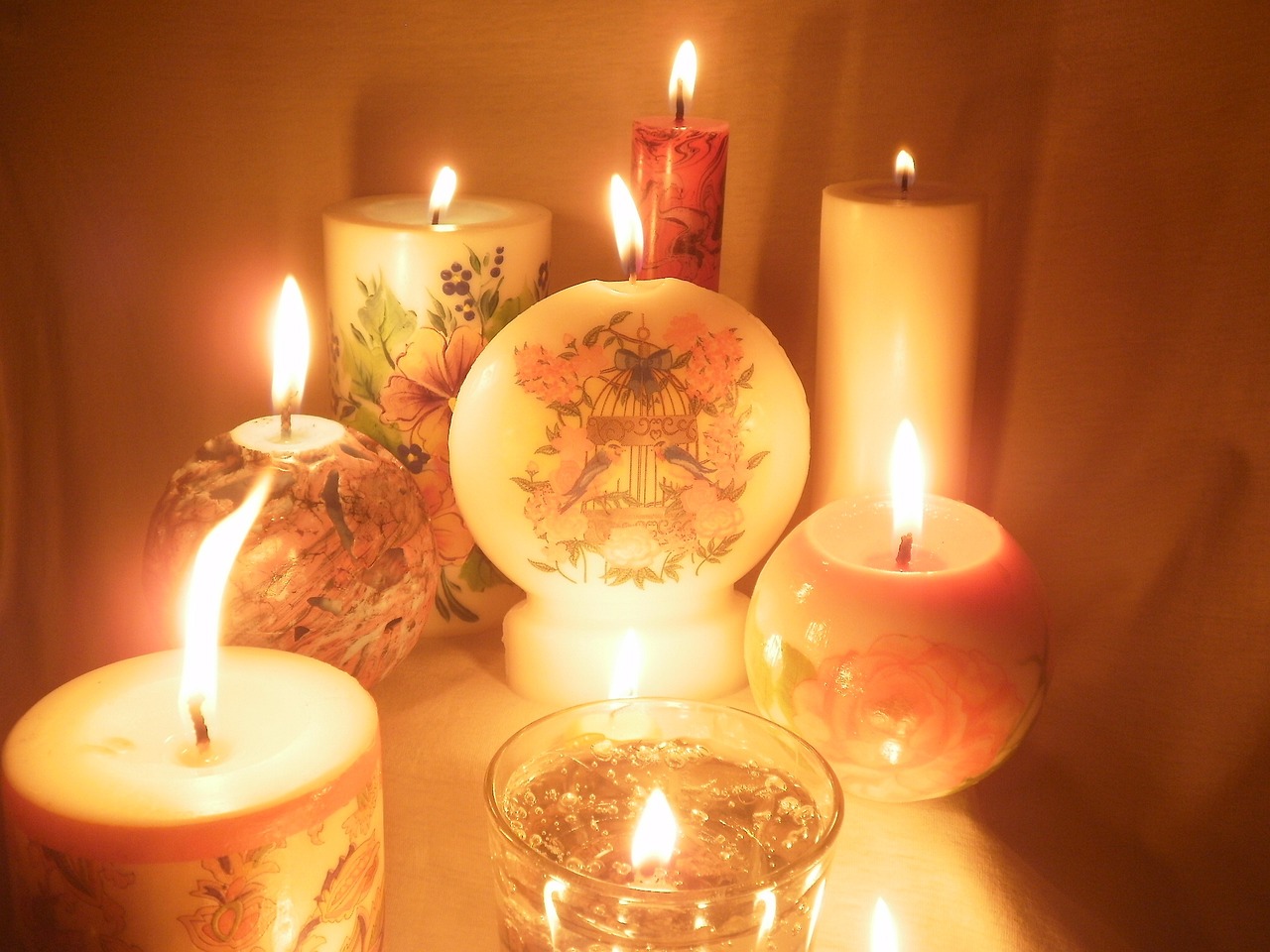
Clay Tiles
When it comes to DIY home decor, clay tiles are like a blank canvas waiting for your creative touch. These tiles are not only versatile but also incredibly easy to work with, making them a favorite among both novice and experienced DIY enthusiasts. Imagine molding the clay into unique shapes, each tile telling a story that resonates with your personal style. Whether you want a rustic look or something more contemporary, clay tiles can adapt to your vision.
One of the most exciting aspects of working with clay is the variety of techniques you can employ to shape and glaze your tiles. You can use simple hand-pressing methods or more intricate techniques like slab rolling and pinching. The beauty of clay lies in its malleability; it’s almost like working with playdough, allowing you to express your creativity freely. Once you’ve shaped your tiles, the next step is glazing, which not only adds color but also enhances the texture and finish of your creations.
Glazing is where the magic happens! It’s the process that transforms your plain clay tiles into vibrant pieces of art. There are various glazing techniques you can experiment with, each offering a different aesthetic. Here are a few popular methods:
- Dip Glazing: Simply dip your tile into a glaze solution for a uniform coating.
- Brushing: Use a brush to apply glaze for more control over the design.
- Sponge Application: A sponge can create interesting textures and patterns.
Choosing the right glazing technique can significantly affect the final look of your tiles, allowing you to play with colors, finishes, and textures. Want a glossy finish? Go for a clear glaze over a vibrant base color. Prefer a matte look? There are glazes specifically designed to give that subtle, sophisticated finish.
Now, let’s talk about the firing process. This is a crucial step in making your clay tiles durable and ready for use. Firing transforms raw clay into a sturdy material that can withstand the test of time. The process usually involves placing your glazed tiles in a kiln, where they are heated to high temperatures, typically between 1,800°F to 2,300°F (982°C to 1,260°C). This not only hardens the clay but also fuses the glaze, making it an integral part of the tile.
After firing, your tiles emerge as beautiful, functional pieces ready to be installed in your home. It’s like watching a caterpillar turn into a butterfly—the transformation is truly remarkable! Just remember, the firing process requires some patience and precision, so be sure to follow guidelines specific to the type of clay and glaze you are using.
In conclusion, clay tiles offer a fantastic opportunity to personalize your space while indulging in a hands-on creative project. With the right techniques and a dash of imagination, you can create stunning tiles that not only enhance your decor but also reflect your unique personality. So, roll up your sleeves and get ready to dive into the world of handmade clay tiles!
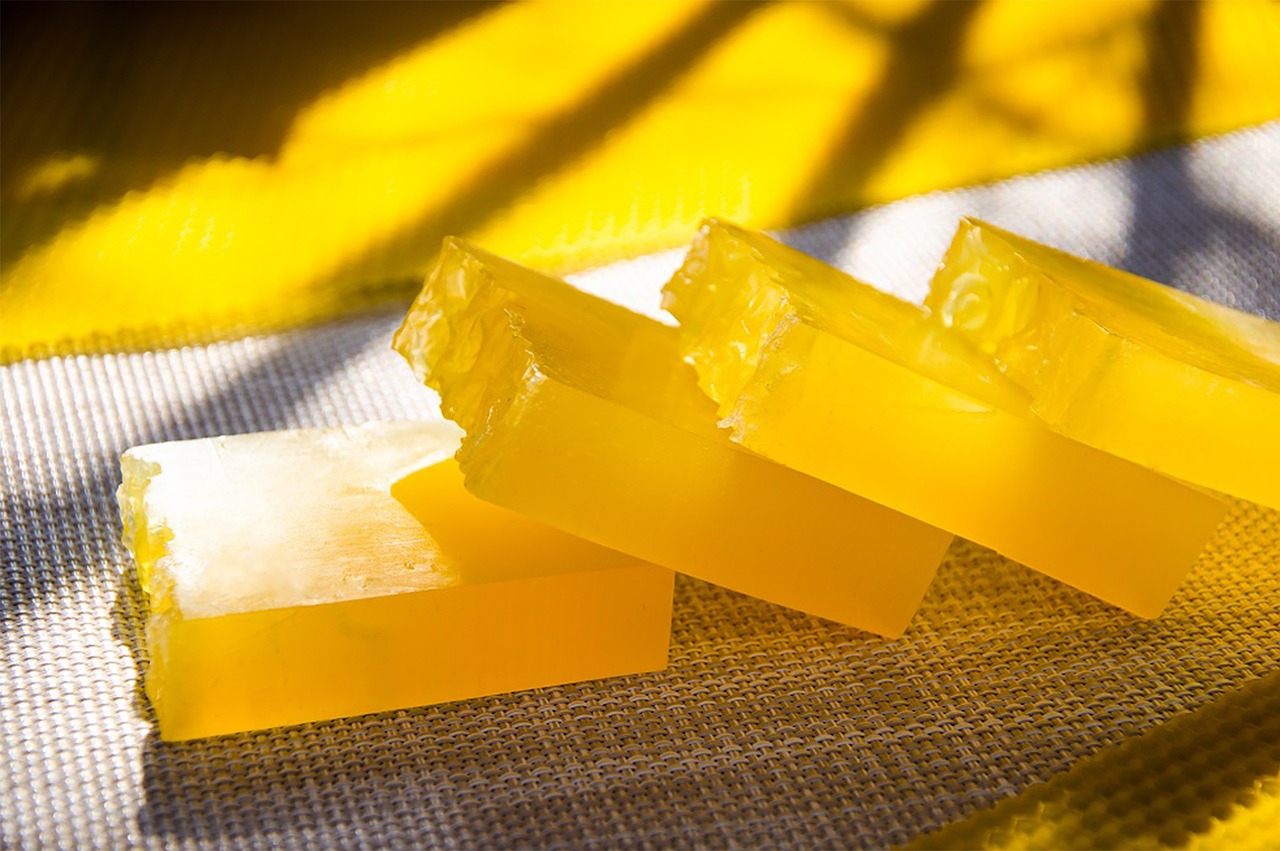
Glazing Techniques
When it comes to creating stunning handmade tiles, play a pivotal role in transforming your creations from simple clay pieces into vibrant works of art. Glazing not only enhances the visual appeal of your tiles but also adds a layer of protection that can withstand the test of time. Imagine your tiles shimmering under the light, each glaze reflecting a spectrum of colors—it's like capturing a sunset in your home!
There are several popular glazing methods that you can explore, each offering unique finishes and effects. Here are some of the most common techniques:
- Dip Glazing: This technique involves submerging the tile into a glaze solution. It’s quick and allows for an even coat, making it ideal for beginners.
- Brush Glazing: For those who love precision, brush glazing allows you to apply glaze with a brush, offering control over the amount and placement of glaze on your tiles.
- Spray Glazing: Using a spray gun, you can achieve a smooth and even finish. This method is perfect for larger projects, allowing for a seamless application.
- Stenciling: Want to add intricate designs? Stenciling involves applying glaze through a stencil to create patterns, giving your tiles a unique flair.
Each technique can yield different results, so it’s worth experimenting to see which one resonates with your creative vision. The choice of glaze is equally important; you can opt for matte, glossy, or even textured glazes to achieve the desired effect. Textured glazes can add depth and interest to your tiles, making them stand out even more.
Once you've chosen your glazing technique, it's time to consider the firing process. This crucial step ensures that your tiles not only look beautiful but are also durable enough to handle everyday use. The firing process involves heating your glazed tiles in a kiln at high temperatures, which causes the glaze to melt and fuse with the clay. This transformation is what gives your tiles their lasting quality and vibrant colors.
In conclusion, mastering glazing techniques is essential for anyone looking to create stunning handmade tiles. Whether you prefer the simplicity of dip glazing or the artistic flair of stenciling, each method offers endless possibilities for creativity. So, grab your tools, unleash your imagination, and let your tiles tell a story that’s uniquely yours!
Q: What is the best glaze for beginners?
A: For beginners, dip glazing is often recommended due to its simplicity and ease of use. It allows for a uniform coat without the need for extensive technique.
Q: Can I mix different glazes?
A: Yes! Mixing glazes can create unique colors and finishes. Just be sure to test your mixtures on a small scale before applying them to your final pieces.
Q: How do I ensure my tiles are food-safe?
A: To ensure your tiles are food-safe, use glazes that are specifically labeled as non-toxic and food-safe. Always check the manufacturer's guidelines for safety information.

Firing Process
Explore the creative world of handmade DIY tiles, their benefits, and how they can transform your living space into a personalized haven of style and artistry.
Discover the unique advantages of using handmade tiles in your home, including their aesthetic appeal, durability, and the personal touch they bring to your decor.
Learn about the various materials you can use to create your own tiles, from clay and ceramics to glass and natural stone, each offering distinct characteristics and finishes.
Explore the versatility of clay tiles, their ease of use, and the different techniques for shaping and glazing that can enhance your DIY projects.
Understand the various glazing methods that can be applied to clay tiles, adding colors and finishes that elevate the overall look of your creations.
The is a crucial step in the creation of handmade tiles, transforming raw clay into durable, functional art pieces. Initially, once you've shaped and dried your tiles, they undergo a preliminary firing known as biscuit firing. This process typically occurs in a kiln and involves heating the tiles to a temperature range of 1,800 to 2,000 degrees Fahrenheit (about 982 to 1,093 degrees Celsius). This initial firing hardens the clay, making it more resilient and ready for glazing.
After the biscuit firing, the tiles can be glazed. This is where the magic truly happens! Applying glaze not only adds color and texture but also seals the tiles, making them waterproof and easier to clean. Once glazed, the tiles must undergo a second firing, known as glaze firing, where temperatures reach up to 2,300 degrees Fahrenheit (approximately 1,260 degrees Celsius). This intense heat causes the glaze to melt and fuse to the surface, resulting in a beautiful, glossy finish that enhances the tile's aesthetic appeal.
It's fascinating to note that the firing process doesn't just harden the clay and set the glaze; it also influences the final color and texture of the tiles. Different firing atmospheres—oxidation versus reduction—can lead to varied results, creating unique finishes that reflect the artist's vision. For instance, a reduction atmosphere can produce rich, earthy tones that are simply stunning. This variability means that no two tiles are ever exactly alike, adding to the charm of handmade creations.
In summary, the firing process is not just a technical necessity but an art form in itself. It’s where the raw material transforms into something extraordinary, ready to be showcased in your home. Whether you’re creating a backsplash in your kitchen or a decorative piece for your living room, understanding this process can help you appreciate the craftsmanship behind each tile.
Uncover the beauty of glass tiles, including their reflective qualities and how they can be incorporated into various design styles for a modern touch.
Get inspired with creative design ideas for your handmade tiles, from intricate patterns to bold colors, that can personalize any space in your home.
Explore various pattern inspirations that can be used in tile design, from geometric shapes to floral motifs, providing endless possibilities for customization.
Learn how to choose the perfect color schemes for your tiles that complement your existing decor, helping to create a cohesive and inviting atmosphere.
Gain practical installation tips to ensure your handmade tiles are applied correctly, enhancing both their appearance and longevity in your home decor.
- What types of clay are best for making tiles?
Earthenware and stoneware are popular choices due to their durability and ease of use.
- Can I use any glaze for my tiles?
Not all glazes are suitable for every type of clay. Always check compatibility before applying.
- How long does the firing process take?
The firing process can take several hours, depending on the kiln and the temperature settings.
- Are handmade tiles suitable for outdoor use?
Yes, but ensure you use frost-resistant clay and glazes to withstand the elements.
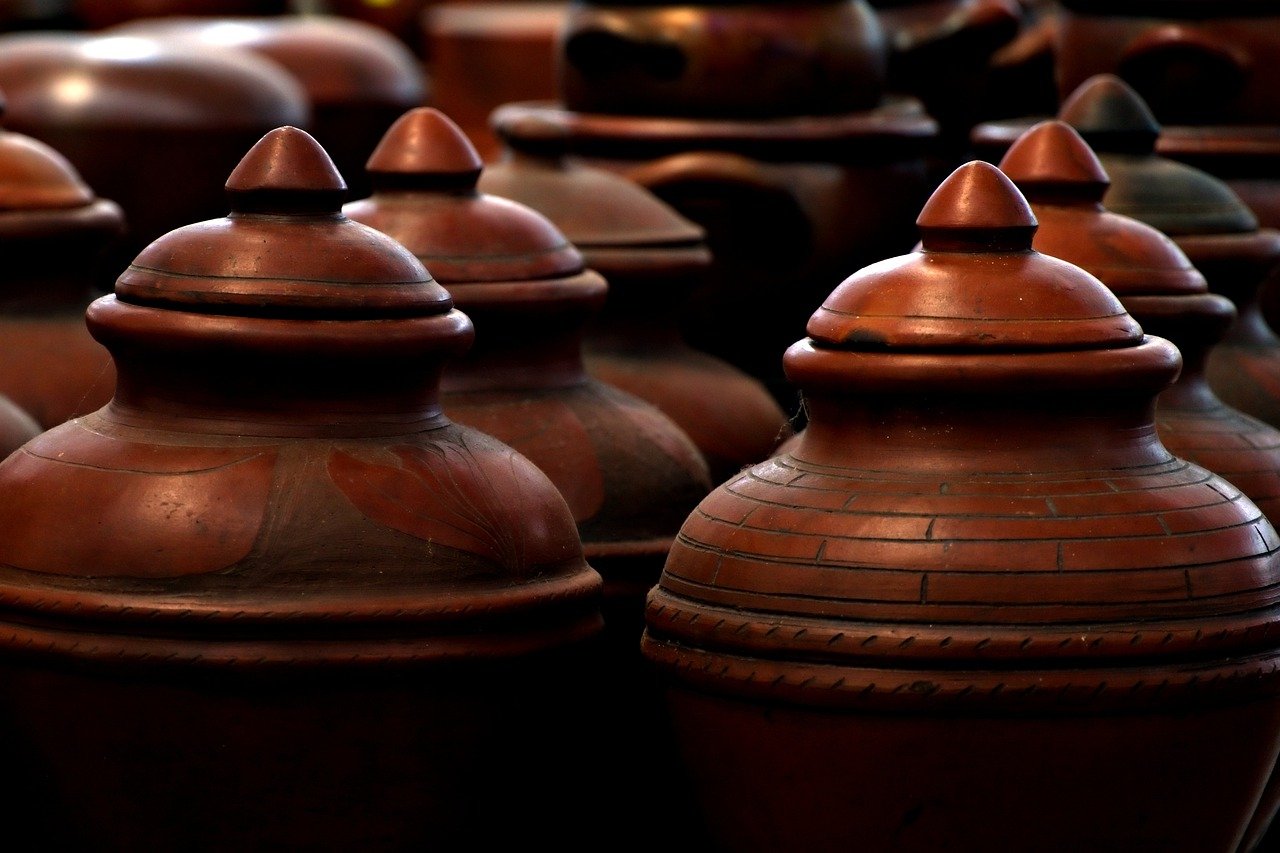
Glass Tiles
When it comes to adding a touch of elegance and modernity to your home decor, stand out as a stunning option. These tiles are not just about aesthetics; they bring a unique blend of beauty and functionality that can elevate any space. Imagine the way light dances off their surfaces, creating a mesmerizing effect that can transform an ordinary room into a vibrant oasis. Whether you’re looking to revamp your kitchen backsplash, create a chic bathroom, or add a splash of color to your living room, glass tiles can do it all.
One of the most captivating features of glass tiles is their reflective quality. Unlike traditional ceramic or stone tiles, glass tiles can reflect light, making spaces feel larger and more open. This is particularly beneficial in smaller rooms where you want to create an illusion of space. Moreover, they come in a variety of colors, shapes, and sizes, allowing you to customize your design to suit your personal style. From sleek, modern designs to more intricate mosaics, the possibilities are virtually endless.
In addition to their aesthetic appeal, glass tiles are also durable and easy to maintain. They are resistant to stains and moisture, making them an ideal choice for areas prone to spills or humidity, like kitchens and bathrooms. Cleaning them is a breeze; a simple wipe with a damp cloth can keep them looking brand new. This low maintenance requirement means you can enjoy the beauty of your tiles without the hassle of extensive upkeep.
When incorporating glass tiles into your decor, consider the following tips to maximize their impact:
- Mix and Match: Combine different colors and textures to create a unique design that reflects your personality.
- Use as Accents: Glass tiles can serve as accent pieces in a predominantly neutral space, drawing the eye and adding interest.
- Backlighting: For a truly stunning effect, consider backlighting your glass tiles. This can create a warm, inviting glow in your home.
In conclusion, glass tiles are more than just a decorative element; they are a versatile and practical choice for any home. Their ability to reflect light, coupled with their durability and low maintenance, makes them a favorite among DIY enthusiasts and interior designers alike. So, if you’re looking to enhance your living space with a touch of sophistication, consider incorporating glass tiles into your next project. You’ll be amazed at how they can transform your home into a stylish retreat.
1. Are glass tiles suitable for outdoor use?
Yes, but make sure to choose tiles specifically designed for outdoor use, as they need to withstand varying weather conditions.
2. How do I clean glass tiles?
Cleaning glass tiles is simple! Use a soft cloth or sponge with mild soap and water to wipe them down.
3. Can I install glass tiles myself?
Absolutely! With the right tools and instructions, DIY installation is feasible. However, if you're unsure, consulting a professional is always a good idea.
4. Do glass tiles chip easily?
While glass tiles are durable, they can chip if subjected to heavy impact. It's best to handle them with care during installation.

Design Ideas for DIY Tiles
When it comes to handmade DIY tiles, the design possibilities are as vast as your imagination. These tiles are not just functional; they are a canvas waiting for your creative touch. Imagine transforming a dull wall into a vibrant art piece or a simple floor into a stunning mosaic that tells a story. The beauty of DIY tiles lies in their ability to reflect your personal style and taste. So, where do you start? Let’s dive into some inspiring design ideas that will help you personalize your space.
One of the most exciting aspects of creating DIY tiles is the ability to incorporate intricate patterns. Think of geometric shapes that create a modern vibe or floral motifs that bring a touch of nature indoors. Patterns can be as simple or complex as you desire, and they can dramatically change the character of a room. For instance, a series of hexagonal tiles in varying shades can create a striking honeycomb effect, while a collection of hand-painted floral tiles can evoke a charming cottage feel.
Colors play a crucial role in tile design. Choosing the right color schemes can either enhance your existing decor or serve as a bold statement. Consider using a palette that complements your furniture and wall colors. For a cohesive look, you might opt for monochromatic tiles that vary in texture but share a similar hue. Alternatively, if you want to make a statement, go for vibrant colors that pop against neutral backgrounds. Just imagine a bright turquoise tile against a soft white wall—it’s like a splash of the ocean in your home!
As you brainstorm your tile designs, don’t forget about the finish. The texture and sheen of your tiles can add depth and interest. For example, matte tiles provide a rustic and earthy feel, while glossy tiles can add a touch of elegance and modernity. You can even mix and match finishes for a more eclectic look. A combination of matte and glossy tiles can create a stunning visual contrast that draws the eye and sparks conversation.
Another fantastic idea is to incorporate themed designs that resonate with your personality or interests. If you love travel, consider tiles that feature landmarks or cultural symbols from your favorite destinations. For the nature lovers, tiles with leaf patterns or earthy tones can bring the outdoors in, creating a serene and calming environment. Themed tiles not only personalize your space but also serve as a reflection of who you are.
To help you visualize these ideas, here's a quick table summarizing some popular design themes and their characteristics:
| Design Theme | Characteristics |
|---|---|
| Geometric | Bold shapes, symmetry, modern appeal |
| Floral | Organic patterns, soft colors, vintage charm |
| Nature | Earthy tones, leaf motifs, serene ambiance |
| Travel | Cultural symbols, vibrant colors, personal stories |
In conclusion, designing your own DIY tiles is not just about functionality; it’s about creating a space that speaks to you. Whether you choose to go bold with colors and patterns or prefer a more subtle approach, the key is to let your creativity flow. Remember, each tile you create is a piece of art that contributes to the overall narrative of your home. So grab your materials, unleash your imagination, and let your tiles tell your story!
Q: Can I use any type of paint on my DIY tiles?
A: It's best to use paints specifically designed for ceramics or glass to ensure durability and adherence.
Q: How do I ensure my tiles are waterproof?
A: Applying a sealant after glazing can help protect your tiles from moisture and stains.
Q: What is the best way to clean handmade tiles?
A: Use a mild detergent and a soft cloth to clean your tiles. Avoid harsh chemicals that can damage the finish.
Q: Can I mix different materials for my DIY tiles?
A: Absolutely! Mixing materials like clay, glass, and stone can create unique textures and designs.
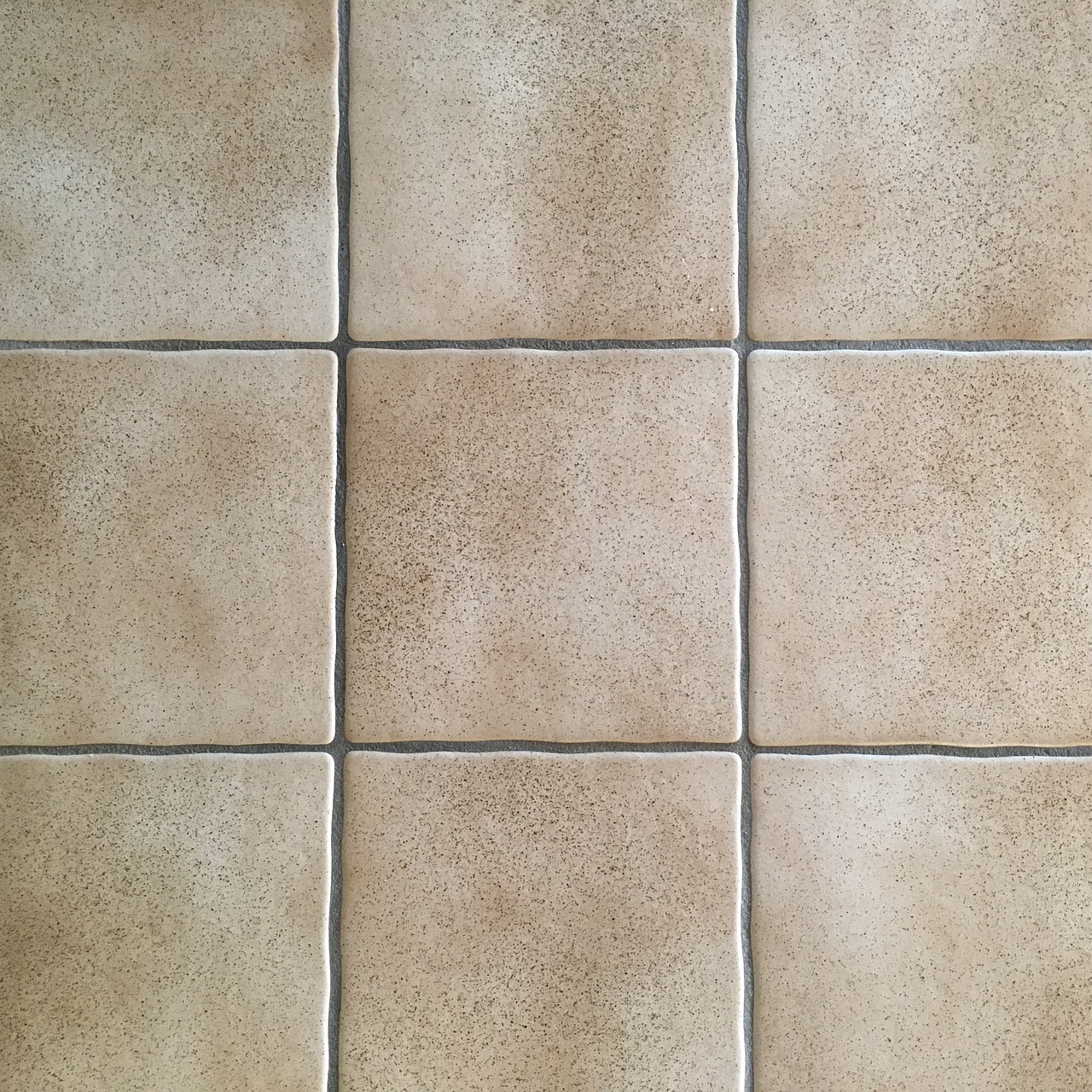
Pattern Inspiration
When it comes to designing your own handmade tiles, the possibilities are as vast as your imagination! Patterns can breathe life into your decor, making your space feel unique and personalized. Think of patterns as the heartbeat of your tiles; they can evoke emotions and set the mood for any room. Whether you're going for a rustic charm or a sleek modern vibe, the right pattern can make all the difference.
One popular approach is to draw inspiration from nature. Imagine tiles adorned with leafy motifs or delicate floral designs that bring the outdoors inside. These patterns can create a soothing atmosphere, reminiscent of a peaceful garden. On the flip side, you might want to embrace the boldness of geometric shapes. Triangles, hexagons, and chevrons can add a contemporary edge to your decor, making your tiles not just a functional element but a true statement piece.
For those who love a touch of whimsy, consider incorporating playful patterns. Think polka dots or stripes that can transform a mundane surface into a lively canvas. You can even mix and match patterns to create a mosaic effect, where each tile tells its own story while contributing to a larger narrative. Just remember, the key to successful pattern mixing is to maintain a sense of harmony; choose colors that complement each other to avoid overwhelming the space.
Moreover, if you're feeling adventurous, you can explore cultural patterns from around the world. From intricate Moroccan tiles to vibrant Mexican Talavera designs, these patterns can transport your decor to far-off lands. Each pattern carries a history and a story, making your handmade tiles not just an addition to your home but a conversation starter.
To help you visualize some of these ideas, here’s a simple table showcasing different pattern types and their potential effects on your decor:
| Pattern Type | Effect on Decor |
|---|---|
| Floral | Brings a touch of nature and tranquility |
| Geometric | Adds modernity and structure |
| Whimsical | Infuses fun and creativity |
| Cultural | Offers a rich history and global flair |
Ultimately, the pattern you choose for your handmade tiles should reflect your personality and the atmosphere you want to create in your home. Don't be afraid to experiment and let your creativity shine! After all, designing your own tiles is not just about aesthetics; it's about crafting a space that feels authentically yours.
Q: Can I mix different tile patterns in one room?
A: Absolutely! Mixing patterns can create a dynamic look, just ensure they share a cohesive color palette to maintain harmony.
Q: What is the best way to seal handmade tiles?
A: Using a suitable sealant after glazing and firing your tiles will protect them from moisture and stains, ensuring their longevity.
Q: Are there specific tools I need for tile making?
A: Basic tools include a rolling pin, tile cutter, and glazing brushes, but you can always expand your toolkit based on your project needs.

Color Schemes
When it comes to creating handmade DIY tiles, play a pivotal role in the overall aesthetic of your space. Choosing the right colors can transform a simple tile into a stunning piece of art that complements your home decor. Think about your existing color palette; are there dominant shades that could use a bit of enhancement? Or maybe you want to create a bold contrast that catches the eye? The beauty of DIY tiles is that you have the freedom to experiment and customize to your heart's content.
One effective approach is to consider the mood you want to evoke in your space. For a serene and calming atmosphere, you might opt for soft hues like pastels or muted tones. These colors can create a peaceful retreat, perfect for areas like bathrooms or bedrooms. On the other hand, if you're looking to energize a room, vibrant colors such as bright reds, yellows, or greens can invigorate the space and make it feel alive.
Additionally, think about the color wheel as your best friend in this journey. By understanding complementary colors, you can create a harmonious look that’s visually appealing. For instance, pairing a rich blue with a warm orange can create a stunning contrast that draws attention without overwhelming the senses. Alternatively, analogous colors—those that sit next to each other on the color wheel—can create a more subtle, cohesive look. Imagine a soft gradient of blues and greens; it’s like bringing a piece of nature indoors!
To help you visualize your color selections, you might want to consider creating a color palette table. Here’s a simple example:
| Color | Emotion/Mood | Best Used In |
|---|---|---|
| Soft Blue | Calm and Relaxing | Bathrooms, Bedrooms |
| Vibrant Red | Energetic and Bold | Living Rooms, Kitchens |
| Earthy Greens | Natural and Grounding | Gardens, Entryways |
| Warm Yellow | Cheerful and Inviting | Dining Areas, Playrooms |
As you explore different color schemes, don’t forget about the finishing touches. Adding accents through grout color or even the arrangement of tiles can enhance the overall impact of your design. For instance, a light grout can make vibrant tiles pop, while a darker grout can create a more sophisticated look with muted tiles. The possibilities are endless, and the only limit is your imagination!
In conclusion, selecting the right color schemes for your handmade tiles is not just about aesthetics; it’s about creating a space that resonates with you and reflects your personality. So go ahead, unleash your creativity, and let your tiles tell a story that is uniquely yours!
- What materials are best for DIY tiles? Clay and glass are popular choices, but you can also experiment with natural stone and ceramics.
- How do I choose a color scheme for my tiles? Consider the mood you want to create, your existing decor, and use the color wheel for inspiration.
- Can I mix different tile materials? Absolutely! Mixing materials can add texture and interest to your design.
- What is the best way to install handmade tiles? Ensure the surface is clean and level, use appropriate adhesive, and allow for proper drying time.
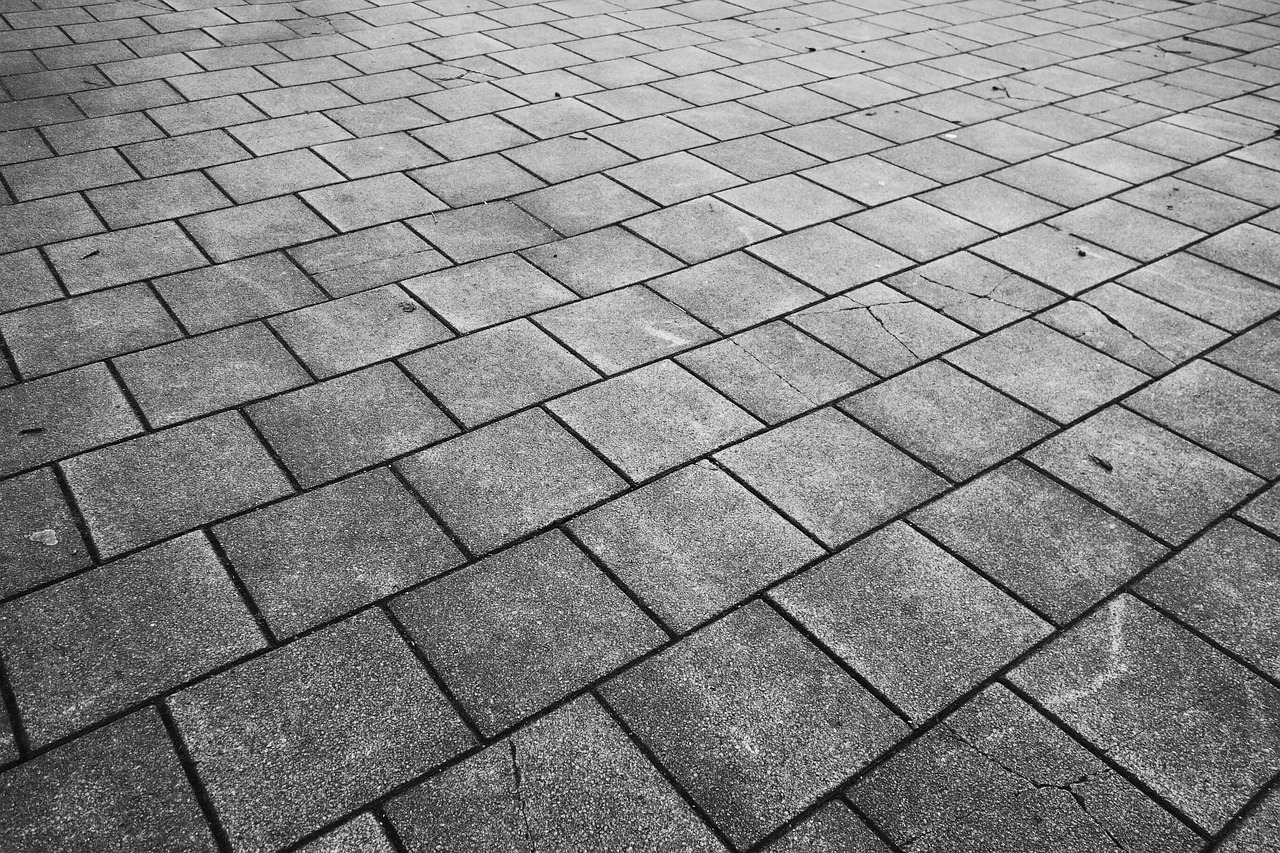
Installation Tips for DIY Tiles
Installing handmade DIY tiles can be an incredibly rewarding experience, but it does require some careful planning and execution to ensure that your hard work pays off. First and foremost, it’s essential to prepare the surface where the tiles will be installed. Make sure the area is clean, dry, and level. Any imperfections in the surface can lead to uneven tiles, which not only looks unappealing but can also affect their durability. So, grab that level and get to work!
Next, consider the layout of your tiles before you start sticking them down. It’s a good idea to lay them out on the floor or countertop first to visualize how they will look. This step allows you to make adjustments to your design, ensuring that you’re happy with the arrangement before committing. If you’re using patterned tiles, pay special attention to how the patterns align. You wouldn’t want to end up with mismatched designs that could disrupt the flow of your beautiful handiwork!
When it comes to the actual installation, using the right adhesive is key. Opt for a high-quality tile adhesive that suits your tile material, whether it’s clay, glass, or stone. Follow the manufacturer’s instructions for application, as this will help ensure a strong bond. For instance, if you're working with clay tiles, a thin-set mortar is often recommended, while glass tiles may require a special adhesive that allows for flexibility. Remember, the right glue is your best friend!
As you apply the adhesive, work in small sections to prevent it from drying out before you can place the tiles. Patience is a virtue! Use a notched trowel to spread the adhesive evenly, ensuring that the tiles will stick properly. Once you start laying down the tiles, gently press them into the adhesive, twisting slightly to ensure a good bond. Use spacers to maintain even gaps between tiles, which is crucial for achieving a professional finish.
After installing your tiles, let them set for the recommended time before grouting. Grouting is where the magic happens; it fills in the gaps and enhances the overall look of your tiles. Choose a grout color that complements your tiles, and apply it using a rubber float. Make sure to wipe away any excess grout from the tile surface with a damp sponge before it hardens. This step can be a bit messy, but it’s essential for a clean finish.
Finally, once the grout has cured, consider sealing your tiles if necessary. Some tiles, especially porous ones like clay, may benefit from a sealant to protect against stains and moisture. Regular maintenance, such as cleaning with gentle products and reapplying sealant as needed, will help keep your DIY tiles looking stunning for years to come.
- What type of adhesive should I use for my tiles? It depends on the material of your tiles. For clay tiles, a thin-set mortar is ideal, while glass tiles may require a specific adhesive.
- How long should I wait before grouting? Typically, you should wait at least 24 hours after laying the tiles, but always refer to the adhesive manufacturer's instructions.
- Can I install tiles over existing flooring? Yes, as long as the existing flooring is level and in good condition. Just make sure to clean it thoroughly before starting.
- Do I need to seal my tiles? It depends on the tile material. Porous tiles like clay usually benefit from sealing, while glass tiles do not need it.
Frequently Asked Questions
- What are the benefits of using handmade DIY tiles?
Handmade DIY tiles offer a unique aesthetic appeal that can elevate your decor. They are not only durable but also allow for a personal touch, making your living space truly one-of-a-kind. Since each tile is crafted individually, you get a sense of artistry and authenticity that mass-produced tiles simply can't match.
- What materials can I use for making DIY tiles?
You can use a variety of materials to create your own tiles, including clay, ceramics, glass, and natural stone. Each material has its own unique characteristics and finishes, allowing you to experiment and find the perfect fit for your design vision.
- How do I glaze my clay tiles?
Glazing is a fun and creative process! You can apply different glazing techniques to enhance the color and finish of your clay tiles. Options include dipping, brushing, or spraying the glaze onto your tiles. Each technique offers a different look, so feel free to experiment until you find what you love!
- What is the firing process for clay tiles?
The firing process is crucial for transforming raw clay into durable tiles. After shaping and glazing your tiles, they need to be fired in a kiln at high temperatures. This process not only hardens the clay but also ensures that the tiles can withstand wear and tear while maintaining their beauty.
- Can I use glass tiles in my DIY projects?
Absolutely! Glass tiles are a fantastic option for adding a modern touch to your decor. They come in various colors and finishes and can reflect light beautifully, making them perfect for creating eye-catching designs in kitchens, bathrooms, and other spaces.
- What design ideas can I use for my handmade tiles?
The possibilities are endless! You can draw inspiration from various patterns, such as geometric shapes or floral motifs. Don't forget to play with color schemes that complement your existing decor to create a cohesive and inviting atmosphere in your home.
- What are some tips for installing DIY tiles?
When it comes to installation, preparation is key! Make sure your surface is clean and level before applying adhesive. Use spacers to ensure even gaps between tiles, and don’t rush the grouting process. Taking your time will enhance both the appearance and longevity of your handmade tiles.



















